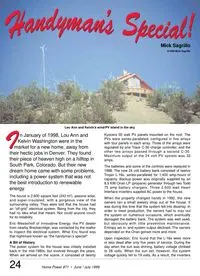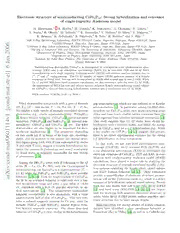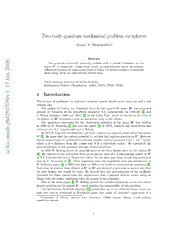
Preview Two-body quantum mechanical problem on spheres
Two-body quantum mechanical problem on spheres Alexey V. Shchepetilov∗ Abstract 6 0 The quantum mechanical two-body problem with a central interaction on the 0 sphere Sn is considered. Using recent results in representation theory an ordinary 2 differentialequationforsomeenergylevelsisfound. Forseveralinteractivepotentials n theseenergy levels are calculated in explicit form. a J PACS numbers: 03.65.Fd, 02.40.Vh, 02.40.Ky. 7 1 Mathematical Subject Classification: 43A85, 22E70, 57S25, 70G65. 3 1 Introduction v 0 5 The history of mechanics on constant curvature spaces started more than one and a half 0 century ago. 7 The analog of Newton (or Coulomb) force for the hyperbolic space H3 was proposed 0 5 already by founders of the hyperbolic geometry N.I. Lobachevski (in 1835-38) [1] and 0 J. Bolyai (between 1848 and 1851) [2] as the value F(ρ), which is inverse to the area of / the sphere in H3 of radius ρ with an attractive body in the center. h p The analytical expression for the Newtonian potential in the space H3 was written - in 1870 by E. Schering [3] (see also his paper [4] of 1873), without any motivation and h references to N.I. Lobachevski and J. Bolyai. t a In1873R.Lipschitzconsideredaone-bodymotioninacentralpotentialonthe sphere m S2[5]. HeknewthatthecentralpotentialV satisfiestheLaplaceequationonS3. However c v: due to some reasonhe preferredto consider another centralpotential V(ρ)∼sin−1(ρ/R), i where ρ is a distance from the center and R is a curvature radius. He calculated the X general solution of this problem through elliptic functions. r In 1885 W. Killing found the generalization of all three Kepler laws for the sphere S3 a [6]. He considered the attractive force as an inverse area of a 2-dimensional sphere in S3 as N.I.LobachevskiandJ.Bolyaidid before. Inthe nextyearthese results waspublished also by C. Neumann in [7]. Their expansion onto the hyperbolic case was carried out in H. Liebman paper [8] in 1902 and later in 1905 in his book on noneuclidean geometry [9]. Note that he started from ellipses in S3 or H3 and derived a potential in such a way that the first Kepler law would be valid. He derived also the generalization of the oscillator potential for these spaces from the requirement that a particle motion occurs along an ellipse with its center coinciding with the center of the potential. Also in the same paper [6] W. Killing provedthe variable separationin the two-centre Kepler problem on the sphere Sn, which implies the integrability of this problem. The well-known Bertrand theorem [10] states that up to an arbitrary factor there are only two central potentials in Euclidean space that make all bounded trajectories of a ∗Department of Physics, Moscow State University, 119992 Moscow, Russia, e-mail address: quant@phys.msu.su 1 1 Introduction 2 one-body problem closed. In spaces S2, H2 also there are only two potentials V and V c o with this property. It was proved by H. Liebman in 1903 [11], see also [9]. One can consider the classical mechanics in spaces of constant curvature as a prede- cessor of special and general relativity. After the rise of these theories the above papers of E. Schering,W. Killing, H. Liebmann were almostcompletely forgotten. Note that the description of a particle motion in central potentials in spaces S3 and H3 was shorten in the second and the third editions of the H. Liebman book [9] w.r.t. the first edition in favor of special relativity. Similar models attracted attention later from the point of view of quantum mechanics and the theory of integrable dynamical systems. This leads to the rediscovery of results describedaboveinmanypapers. NotehoweverthatalmostforgottenresultsofE.Schering, W. Killing and H. Liebmann were described in the survey [12]. Quantum mechanical spectral problem on the sphere S3 for potential V (Coulomb c problem) was solved by E. Schr¨odinger in 1940 by the factorization (ladder) method, invented by himself [13]. A.F. Stevenson in 1941 solved the same problem using more traditional analysis of the hypergeometric differential equation [14] (see also L. Infeld result in 1941 [15]). L. Infeld and A. Schild in 1945 solved a similar problem in the space H3 [16] (see also [17]). The connection of the Runge-Lenz operator for the quantum Kepler problem in S3 with the Schr¨odinger ladder method was discussed by A.O. Barut and R. Wilson in [18]. In [19] A.O. Barut, A. Inomata and G. Junker solved the Kepler problem in S3 and H3 using the functional integration. Inpapers[20],[21]V.S.OtchikconsideredtheoneparticlequantumtwocenterCoulomb probleminS3 andfound a coordinatesystemadmitting the variableseparation. The cor- responding ordinary differential equations are Heun’s ones. In [22] – [26] there was developed an algebraic approach to one particle problems for potentials V and V in spaces Sn,Hn. c o Transformations between the Coulomb-Kepler and oscillator problems existing in the Euclidean space were generalized for the sphere in [27]. In [28] A.A. Bogush, Yu.A. Kurochkin and V.S. Otchik considered the Coulomb scat- tering in the space H3. The two-body problem with a centralinteraction in constant curvature spaces Sn and Hn considerably differs from its Euclidean analog. The variable separation for the latter problem is trivial, while for the former one no central potentials are known that admit a variable separation. Theclassicaltwo-bodyproblemwithacentralinteractioninconstantcurvaturespaces wasconsideredforthe firsttime in[29]. ItsHamiltonianreductiontothe systemwithtwo degreesoffreedomwascarriedoutbyexplicitcoordinatecalculations. Forsomepotentials there was proved the solvability of the reduced problem for an infinite period of time. In[30]there wasstudied the self-adjointnessofthe quantumtwo-bodyHamiltonianin spaces S2 and H2 and were found in explicit form some its infinite energy level series for the sphere S2, corresponding to some central potentials. Simply connected constant curvature spheres Sn and hyperbolic spaces Hn are rep- resentatives of the class of two-point homogeneous Riemannian spaces (TPHRS). Such spaces are characterized by the property that any pair of points can be transformed by means of an appropriate isometry to any other pair of points with the same distance between them. Equivalently, these spaces are characterizedby the property that the nat- ural action of the isometry group on the unit sphere bundle over them is transitive. The classification of TPHRS can be found in [31]. For a smooth manifold M endowed with a left action of a Lie group G denote by Diff(M) Diff (M) the algebra of G-invariant differential operators on M with smooth G ≡ coefficients. For a Riemannian manifold M let M be the unit sphere bundle over M. S 2 Invariant differential operators 3 Let Q be an arbitrary TPHRS, endowedwith the action of the identity component of the isometry group for Q. In[32]therewasfoundapolynomialexpressionforthequantumtwo-bodyHamiltonian H on Q through a radial differential operator and generators of the algebra Diff(Q ). S Coefficients of this polynomial depend only on the distance between particles. AlgebrasDiff(Q ) arenoncommutative. A full setof their generatorsandcorrespond- S ing relations1 was found in [33]. Let A be a set of Diff(Q ) generators presented in the expression for the Hamiltonian S H. An every common eigenfunction of operators from A generates a separate spectral ordinary differential equationfor the two-body quantum mechanicalproblem on TPHRS. The search for such common eigenfunction is not an easy problem. In low dimensions for Q = S2, Q = S3 this problem was solved in [30] and [34] using an explicit description of SO(3) and SO(4) irreducible representations. The present paper deals with this problem for the general spherical case Q = Sn. The progress is reached using the results in representations theory of the algebras so(n,C) in [35] and [36] Thepaperisorganizedasfollows. Sections2–4areofapreparatorycharacter. Section 2 and 3 contain basic facts on invariant differential operators on homogeneous spaces and regular representations of compact Lie groups respectively. In section 4 there is a description of the quantum two-body Hamiltonian on the sphere Sn through a radial differential operator and generators D , i=0,1,2,3 of the algebra Diff(Sn). i S Sections 5 and 6 form a main part of the paper. In section 5 we calculate actions of operators D , i = 0,1,2,3 in a corresponding functional space and find all common i eigenvectors ψ for operators D2,D ,D and optionally D . Using these eigenvectors D 0 1 2 3 we derive in section 6 a separate ordinary differential equation of the second order for a radial part of a two-body eigenfunctions. For Coulomb and oscillator potentials this differential equation is Fuchsian and we consider its reducibility to the hypergeometric one using the rational change of an independent variable. This reduction is possible for some eigenvectorsψ that leads to an explicitform ofsome infinite energylevelseriesfor D the two-body problem with Coulomb and oscillator potentials. AnecessaryinformationconcerningcomplexorthogonalLiealgebras,self-adjointSchr¨o- dinger operators on Riemannian spaces and Fuchsian differential equations is collected in appendices A–C. ACKNOWLEDGEMENT. The author is grateful to A.I. Molev for pointing out his papers [35] and [36]. 2 Invariant differential operators on homogeneous spaces Hereweshallbrieflydescribethe constructionofinvariantdifferentialoperatorsonhomo- geneous spaces [37]. Let G be a Lie group of dimension N and K be its subgroup of dimension N ℓ. − Denote the corresponding Lie algebras as g and k. Suppose that the algebra g admits the reductive expansion g=p k, (1) ⊕ for a subspace p g, i.e. Ad p p. For a compact Lie group G such subspace p can K ⊂ ⊂ always be constructed using the invariant integration on G. Let (e )N be a base in g j j=1 such that (e )ℓ is a base in p. j j=1 1One relation for the quaternion projective space and its hyperbolic analog was calculated only in leadingterms. 3 Regular representations of compact Lie groups 4 Let S(p) be a symmetric algebra for the linear space p. The Ad -action on p is K naturally extended to the Ad -actiononS(p). The main resultof the generaltheory [37] K is that G-invariant differential operators on G/K are in one to one correspondence with the set S(p)K of all Ad -invariant elements in S(p). K Let ı : p S(p) be an inclusion, U(g) be the universal enveloping algebra for g and → λ: S(p) U(g) be a linear symmetrization map, defined on monomials by the formula → 1 λ(e ... e )= e ... e , 16i 6ℓ, 16j 6k, ∗i1 · · ∗ik k! iσ(1) · · iσ(k) j σX∈Sk where e :=ı(e ) and S is the full permutations group of k elements. Evidently ∗ij ij k λ: S(p)K U(g)K, → where U(g)K is the set of all Ad -invariant elements in U(g)K. K Let P(e ,...,e ) be a polynomial depending on noncommutative elements. Denote 1 N by e˜i the left invariant vector field on G, corresponding to the element ei ∈g∼=TeG: d e˜ = gexp(te ), g G. i|g dt i ∈ (cid:12)t=0 (cid:12) (cid:12) Then DP :=P(e˜1,...,e˜N) is a left inva(cid:12)riant differential operator on G. Functions on the homogeneous space G/K are in one to one correspondence with functions on the group G that are invariant w.r.t. right K-shifts. For P(e ,...,e ) 1 N ∈ U(g)K the differential operator D , acting on such functions, can be considered as a G- P invariantdifferentialoperatoronthe spaceG/K andeverysuchoperatorcanbe uniquely represented in the form (λ(P ))(e˜ ,...,e˜ )), 0 1 ℓ for some P S(p)K. 0 ∈ 3 Regular representations of compact Lie groups Let G be a compact connected Lie group and µ be a biinvariant positive measure on G, unique up to an arbitrary factor [38]. Let 2(G,µ) be a Hilbert space of measurable L complexvaluedfunctionsonG,squareintegrablew.r.t.themeasureµ. Definetwounitary left representations of G in the space 2(G,µ). The left regular representation Tl acts by L the left shifts Tlf (g)=f(q 1g), q,g G,f 2(G,µ) q − ∈ ∈L and the right regular re(cid:0)prese(cid:1)ntation Tr acts by the right shifts Trf (g)=f(gq), q,g G,f 2(G,µ). q ∈ ∈L Evidently these represe(cid:0)ntatio(cid:1)ns are equivalent with the intertwining operator f(g) → f(g 1). It is well known that these representations expand into direct sums of finite − dimensional unitary irreducible representations (irreps). Each of these irreps is contained in Tl or Tr with a multiplicity equal to its dimension and an every linear irreducible representation of G is equivalent to an irreps from this sum [39], [40]. LetT beafullsystemofunitaryirrepsforGinspacesU , ℓ=1,2,.... Chooseinevery ℓ ℓ Uℓ anorthonormalbase (eℓ,k)dkℓ=1, dℓ :=dimCUℓ. Define matrix elements tiℓ,k ofoperators Tr bytheequationTre =:ti (q)e orequivalentlybyti (q):= e ,Tre , q G. q q ℓ,k ℓ,k ℓ,i ℓ,k h ℓ,i q ℓ,kiUℓ ∈ Since ti (gq)e =TrTre =tj (g)ti (q)e , g,q G ℓ,k ℓ,i g q ℓ,k ℓ,i ℓ,k ℓ,j ∈ 4 Two-body Hamiltonian on the sphere Sn 5 one has ti (gq)=ti (g)tj (q). (2) ℓ,k ℓ,j ℓ,k Thereforethesubspace 2(G,µ),spannedbyfunctions(ti (g))dℓ ,isinvariantun- Rℓ,i ⊂L ℓ,j j=1 deroperatorsTr andtherepresentation Tr isequivalenttoT . Ontheotherhand,the formula (2) impqlies that the subspace |Rℓ,i2(G,µ), spannedℓby functions (ti (g))dℓ , Lℓ,j ⊂ L ℓ,j i=1 is invariant under operators Tl and the representation Tl is again equivalent to T . q ℓ The functions (tiℓ,j(g))di,ℓj=1, ℓ = 1,2,... form an orthogon(cid:12)(cid:12)aLlℓ,jbase in the space L2(G,µ) [38], [39], [40] and µ(G) ti 2 = . k ℓ,jkL2(G,µ) dℓ Thus the space dℓ dℓ := = ℓ ℓ,i ℓ,j T R L i=1 j=1 M M is invariant under representations Tr and Tl. The representation Tr intermixes spaces of representations Tl and vise versa the representation Tl intermixes spaces of ℓ,j ℓ,i L R representations Tr. The space 2(G,µ) of representations Tr and Tl expands into irreps L as follows dℓ dℓ 2(G,µ)= = = . ℓ ℓ,i ℓ,j L T R L ℓ ℓ i=1 ℓ j=1 M MM MM For a Lie subgroup K of the group G the subspace 2(G,K,µ) 2(G,µ), consisting of L ⊂L functions invariantw.r.t.allrightK-shifts onG, is invariantw.r.tleft G-shifts. Therefore there are only two possibilities: 2(G,K,µ)= and 2(G,K,µ)=0. ℓ,j ℓ,j ℓ,j L ∩L L L ∩L The consideration above implies the following proposition. Proposition 1. Let ℓ := ℓ 2(G,K,µ), ℓ,i := ℓ,i 2(G,K,µ), d˜ℓ :=dimC ℓ,i. T T ∩L R R ∩L R Evidently, ethe value d˜ℓ does not deepend on i = 1,...,dℓ. The representeation Tl is expanded into the direct sum of equivalent irreps in spaces K , k = 1,...,d˜, whichTℓare among of . On the other hand Lℓ,k ℓ (cid:12)(cid:12)e ℓ,j L dℓ = , ℓ ℓ,i T R i=1 M e e where the spaces , i=1,...,d are isomorphic to each other. ℓ,i ℓ R e 4 Two-body Hamiltonian on the sphere Sn Let Sn, n > 2 be the n-dimensional sphere, endowed with the standard metric g of a constant sectional curvature R 2, R>0 and − 1 ∂ ∂ = √γgij , △ √γ∂xi ∂xj (cid:18) (cid:19) 4 Two-body Hamiltonian on the sphere Sn 6 be the corresponding Laplace-Beltrami operator, expressed through local coordinates, where γ := det g . We start from the description of the two-body quantum Hamil- ij k k tonian on Sn found in [32] and [41]. The configurations space for the two-body system on Sn is Sn Sn. (3) × The Hamiltonian for this system is 1 1 H =H +V +V(ρ), (4) V 0 1 2 ≡−2m △ −2m △ 1 2 where , i = 1,2 is the Laplace-Beltrami operator on the ith factor of (3) and ρ be i △ the distance between particles. It should be defined on some subspace Dom(H) dense in 2(Sn Sn,χ χ) to be a self-adjoint operator, where χ is the measure on Sn induced L × × by the metric. In local coordinatesχ has the form: χ=√γdx1 ... dxn. Note that the ∧ ∧ free Hamiltonian H is the Laplace-Beltrami operator for the metric 0 g :=m π˜ g+m π˜ g (5) 2 1 1∗ 2 2∗ on (3), multiplied by 1/2, where π˜ g is the pullback of the metric g with respect to the − i∗ projection on the i-th factor. LetG=SO(n+1)bethe identitycomponentoftheisometrygroupforthe sphereSn. ∼ One can consider SO(n+1) in the standard way as SO(n+1)= A GL(n+1,R) AAT =E, detA=1 , ∈ | where E is the matrix unit. (cid:0)The configuration space (3) is endowed(cid:1)with the diagonal G-action and the differential operator (4) is G-invariant. Let K =SO(n 1) be a subgroup in SO(n+1) with elements of the form ∼ − E 0 1 0 2 , E = , A SO(n 1). 0 A 2 0 1 ∈ − (cid:18) (cid:19) (cid:18) (cid:19) Uptoamanifoldofdimensionn,consistingofantipodalpoints,theconfigurationspace (3) can be represented as the direct product I (G/K), (6) × where I =(0,πR) and the factor space G/K is G-homogeneousw.r.t. left shifts [32]. The space G/K is isomorphic to the unit sphere bundle over Sn [33]. TheLiealgebrag=so(n+1),correspondingtothegroupG,consistsofskew-symmetric ∼ matrices. Let E be the matrix of the size (n+1) (n+1) with the unique nonzero kj × elementequals1,locatingattheintersectionofthek-throwandthej-thcolumn. Choose the base for the algebra g as: Ψ =E E , 16k<j 6n+1. kj kj jk − The algebra g admits the reductive expansion (1), where the subspace p is spanned by elements Ψ , 26k 6n+1, Ψ , 36k 6n+1. 1k 2k In the general case n>4 generatorsof the commutative algebra S(p)K can be chosen [33] as: n+1 n+1 n+1 −Ψ∗12, (Ψ∗1k)2, (Ψ∗2k)2, − Ψ∗1kΨ∗2k. k=3 k=3 k=3 X X X 4 Two-body Hamiltonian on the sphere Sn 7 In the case n=3 there is the additional generator (cid:3)∗ =Ψ∗13Ψ∗24−Ψ∗14Ψ∗23. In the case n=2 the group K is trivial and generators of S(p)K =S(p) are simply Ψ , Ψ , Ψ . ∗12 ∗13 ∗23 In all cases we shall consider elements n+1 n+1 n+1 1 D = Ψ , D = Ψ2 , D = Ψ2 , D = Ψ ,Ψ , (7) 0 − 12 1 1k 2 2k 3 −2 { 1k 2k} k=3 k=3 k=3 X X X from U(g) as invariant differential operators on the space G/K, where , means an {· ·} anticommutator. The commutative relations for differential operators (7) are (see [33]) [D ,D ]= 2D , [D ,D ]=2D , [D ,D ]=D D , [D ,D ]= 2 D ,D , (8) 0 1 3 0 2 3 0 3 1 2 1 2 0 3 − − − { } (n 1)(n 3) (n 1)(n 3) [D ,D ]= D ,D + − − D , [D ,D ]= D ,D − − D . 1 3 0 1 0 2 3 0 2 0 −{ } 2 { }− 2 For n=3 the additional operator 1 (cid:3):= ( Ψ ,Ψ Ψ ,Ψ ) 13 24 14 23 2 { }−{ } lies in the centre of the algebra Diff (G/K). G Define a new coordinate r on the interval I by the equation ρ r =tan , r R :=(0, ). + 2R ∈ ∞ (cid:16) (cid:17) Results from [32] and [33] imply the following theorem. Theorem 1. The quantum two-body Hamiltonian on the sphere Sn can be considered as the differential operator (1+r2)n ∂ rn 1 ∂ m α2+m β2 H = − 1 2 D2 (9) −8mR2rn 1∂r ◦ (1+r2)n 2∂r − 2m m R2 0 − (cid:18) − (cid:19) 1 2 (m α m β)(1+r2)n ∂ rn 1D 1 1 2 − 0 + − , (CD +AD +2BD )+V(r), 4m m R2rn 1 ∂r (1+r2)n 1 − 2 1 2 3 1 2 − (cid:26) − (cid:27) on the space R G, where + × m m 1 2 m:= , (10) m +m 1 2 a parameter α (0,1) is arbitrary, β :=1 α, and ∈ − (1+r2)2 A= m cos2(2αarctanr)+m cos2(2βarctanr) , 4m m R2r2 1 2 1 2 (1+r2)2 (cid:0) (cid:1) B = (m sin(4αarctanr) m sin(4βarctanr)), 8m m R2r2 1 − 2 1 2 (1+r2)2 C = m sin2(2αarctanr)+m sin2(2βarctanr) . 4m m R2r2 1 2 1 2 The domain for operator (9) (cid:0)is dense in the space 2(R G,K,η), co(cid:1)nsisting of all + complex valued square integrable K-invariant functionLs on R× G, with respect to right + × K-shifts and the measure rn 1dr − dη = dµ dν dµ, (1+r2)n ⊗ ≡ ⊗ where µ is a biinvariant measure on G, unique up to a constant factor. 4 Two-body Hamiltonian on the sphere Sn 8 In the following we choose the parameter α in such a way that m α m β =0, i.e. 1 2 − m m 2 1 α= , β = . m +m m +m 1 2 1 2 For such choice operator (9) becomes (1+r2)n ∂ rn 1 ∂ 1 H = − D2 −8mR2rn 1∂r ◦ (1+r2)n 2∂r − 2(m +m )R2 0 − (cid:18) − (cid:19) 1 2 (11) 1 (CD +AD +2BD )+V(r). 1 2 3 − 2 It is obvious that 2(R G,K,η)= 2(R ,ν) 2(G,K,µ). (12) + + L × L ⊗L Operators D2,D ,D ,D act on the second factor in (12). This action will be studied in 0 1 2 3 the following section. Note that B 0 for m = m . Let ψ 2(G,K,µ) be a common eigenfunctions 1 2 D ≡ ∈ L for operators D2,D ,D if m = m and also for D if m = m . Then the following 0 1 2 1 2 3 1 6 2 stationary Schr¨odinger equation H(f(r)ψ )=Ef(r)ψ (13) D D is equivalent to a spectral problem for an ordinary differential equation for a function f(r) and an energy level E (in other words to a one-dimensional stationary Shr¨odinger equation).2 Proposition 2. Let ψ be a common eigenfunction for operators D2,D ,D ,D with D 0 1 2 3 eigenvalues δ ,δ ,δ and δ respectively. Then 0 1 2 3 1. δ =δ and δ =0; 1 2 3 2. D ψ is an eigenfunction for operators D2,D ,D ,D with the same eigenvalues 0 D 0 1 2 3 δ ,δ ,δ and δ respectively; 0 1 2 3 3. ifD ψ ψ ,thenD ψ √δ ψ areeigenfunctionsforoperatorsD ,D ,D ,D ; 0 D D 0 D 0 D 0 1 2 3 6∼ ± 4. if D ψ ψ , then either D ψ =0 or δ =δ =(n 1)(n 3)/4. 0 D D 0 D 1 2 ∼ − − Proof. Relations [D ,D ]=D D and [D ,D ]= 2 D ,D imply 0 3 1 2 1 2 0 3 − − { } [D ,D ]ψ =δ D ψ D D ψ =(D D )ψ =(δ δ )ψ , 0 3 D 3 0 D 3 0 D 1 2 D 1 2 D − − − 1 δ D ψ +D D ψ = D ,D ψ = [D ,D ]ψ =0. (14) 3 0 D 3 0 D 0 3 D 1 2 D { } −2 The last two equations lead to 2δ D ψ =(δ δ )ψ . (15) 3 0 D 1 2 D − If δ = 0, then the last equation implies D ψ ψ and the relation [D ,D ] = 2D 3 0 D D 0 1 3 6 ∼ − givesδ ψ =D ψ = 1[D ,D ]ψ =0. Thus δ =0 andequation(15) implies δ =δ 3 D 3 D −2 0 1 D 3 1 2 that proves the first claim of the proposition. Now from equation (14) one gets D D ψ = 0 and the first two relations (8) imply 3 0 D D D ψ = D D ψ = δ D ψ . The relation D2D ψ = δ D ψ is evident, which 1 0 D 2 0 D 1 0 D 0 0 D 0 0 D completes the proof of the second claim. 2Note that such eigenfunctions are very special elements of the space L2(G,K,µ) and they do not spanit. 5 Action of operators D2,D ,D ,D . 9 0 1 2 3 TherelationD2ψ =δ ψ isequivalentto D +√δ id D √δ id ψ =0. Now 0 D 0 D 0 0 0− 0 D if D0ψD 6=√δ0ψD, then ψD− := D0−√δ0id ψ(cid:0)D is aneigen(cid:1)fu(cid:0)nctionfor th(cid:1)e operatorD0. ThefunctionψD− isalsoaneigen(cid:0)functionforo(cid:1)peratorsD1,D2,D3 duetothesecondclaim. The consideration for the function ψ+ := D +√δ id ψ is completely similar. Thus D 0 0 D the third claim is proved. (cid:0) (cid:1) Assume now D ψ =δ ψ . Then the last relation from (8) gives 0 D 0′ D 1 2δ0′δ2ψD = 2(n−1)(n−3)δ0′ψD. It means either δ =0 or δ =δ =(n 1)(n 3)/4 that proves the last claim. 0′ 1 2 − − 5 Action of operators D ,D ,D ,D in the space 0 1 2 3 2(G,K,µ) L Hereweusenotationsofsection3forG=SO(n+1)andK =SO(n 1). Belowwemean by the complexification gC of the Lie algebra g the following set − so(n+1,C)= A gl(n+1,C) A+AT =E . (16) ∈ | (cid:0) (cid:1) OperatorsD arepolynomialw.r.t.infinitesimalgeneratorsofrightG-shifts. Therefore i theyconservethespaces andgenerallyintermixitsdirectsummands K , k =1,...,d˜ Tℓ Lℓ,k ℓ withconstantℓanddifferentk. OntheotherhandtheyactinspacesR andtheiraction ℓ,i is the same for constant ℓeand different i=1,...,d . ℓ From now we shall treat complex spaces Rℓ,i as a simple left modeules over gC. Their subspaces Rℓ,i consist of elements annulled by the subalgebra kC ∼=so(n−1,C)⊂gC. The classification of such modules based on the notion of a dominant weight is well- known [46],e[47] (see also appendices A and B for a brief description). In order to apply this theory one should use a form of so(n+1,C), described in appendix A and different from (16). Besides, since B := so(2k+1,C) and D := so(2k,C) are different series of k k simple complex Lie algebras, we shall consider cases of odd and even n separately. 5.1 The case n = 2k In this section we shall use notations from appendix A.1. In particular, by B we mean k the set (A.1). First of all we shall construct the isomorphism gC ∼=Bk in explicit form. Let 1 E 0 1 S √2 k √2 k J = 0 1 0 GL(2k+1,C), 2k+1 i i ∈ S 0 E √2 k √−2 k where i is the complex unit. It is easily verified that J S JT =E . 2k+1 2k+1 2k+1 2k+1 Therefore the equation ATS +S A = 0 for A gl(2k+1,C) is equivalent to the 2k+1 2k+1 ∈ equation BT +B =0, where B := JT −1AJT . Thus the map 2k+1 2k+1 B(cid:0) JT (cid:1) B JT −1 (17) → 2k+1 2k+1 is the isomorphism between gC and B . (cid:0) (cid:1) k 5 Action of operators D2,D ,D ,D . 10 0 1 2 3 Let 0 α A a A + − α 0 B b B + C = −AT BT − g, − a− − b− C′ ∈ − − AT BT − + − + where A = a ,...,a , A =(a ,...,a ), B = b ,...,b , (k 1) 1 + 1 k 1 (k 1) 1 − − − − − − − − − B =(b ,...,b ), a ,b ,a,b R, C so(2k 1). + (cid:0) 1 k 1 i(cid:1)i ′ (cid:0) (cid:1) − ∈ ∈ − Move the second row and the second column of the matrix C to the last positions. This gives the matrix 0 A a A α + AT BT C =−−a− C′ −−b−∈so(2k+1), C′ ∈so(2k−1). AT BT − + − + e α B eb B 0 e − − + The transformation (17) now gives for C :=JT C JT −1 the expression 2k+1 2k+1 2iα Z iZ+Sbk 1 √2z eZ(cid:0) Sk (cid:1)1+iZ+ 0 ZT −iS ZT −− − − − ZT iS ZT C = 1− −−√2kz¯−1 + C − −−√2kz−1 +, 2 S −ZT +iZT ′ S −ZT +iZT b − k−1 0− + Z iZ S √b2z¯ Z S +iZ − k−12i−α + −− + k−1 − k−1 + where Z := A +iB , Z := A +iB , z := a+ib, C B . Let us identify Lie + + + ′ k 1 algebras−gC and−B th−rough the map C C. Due to the d∈efinit−ion of Ψ in section 4 k ij → one gets the following formulas b b 1 i Ψ =iF , Ψ = (F F ), Ψ = (F +F ), 12 kk 1,k+2 k0 0k 2,k+2 k0 0k √2 − −√2 1 Ψ = (F +F +F +F ), j =i k 2, 36i6k+1, 1i kj k, j kj k, j 2 − − − − − − i Ψ = (F F +F F ), j =i k 2, k+36i62k+1, 1i kj k, j kj k, j 2 − − − − − − − − i Ψ = (F +F F F ), j =i k 2, 36i6k+1, 2i kj k, j kj k, j 2 − − − − − − − − 1 Ψ = (F F +F F ), j =i k 2, k+36i62k+1, 2i kj k, j k, j kj 2 − − − − − − − − which imply k 1 D = 1(F F )2+ 1 − F +F ,F +F , 1 k0 0k kj kj k, j k, j 2 − 2 { − − − − } j=1 X k 1 D = 1(F +F )2+ 1 − F F ,F F , (18) 2 k0 0k kj kj k, j k, j −2 2 { − − − − − − } j=1 X k 1 i − D = F2 F2 +i (F F F F ), D = iF . 3 2 k0− 0k kj k,−j − −kj −k,−j 0 − kk j=1 (cid:0) (cid:1) X
The list of books you might like

Better Than the Movies

A Thousand Boy Kisses

The Strength In Our Scars

The Mountain Is You
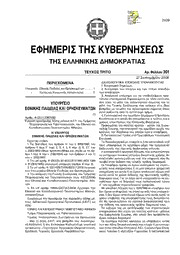
Greek Government Gazette: Part 3, 2006 no. 301
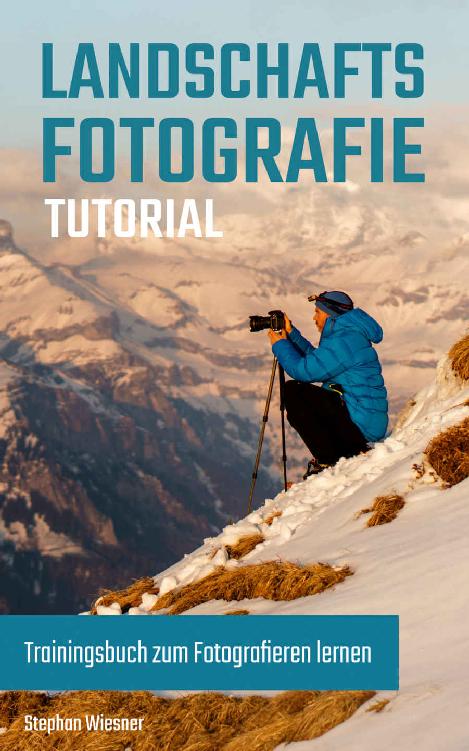
Landschaftsfotografie Tutorial: Trainingsbuch zum Fotografieren lernen (German Edition)

The Art of Selfishness
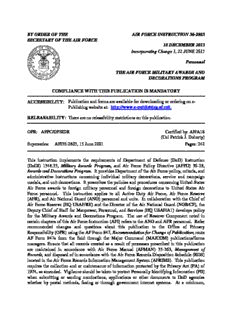
BY ORDER OF THE SECRETARY OF THE AIR FORCE AIR FORCE INSTRUCTION 36-2803 18 ...

Die Klavierspielerin: Lektüre- Und Interpretationshilfe

Børns angst for venepunktur
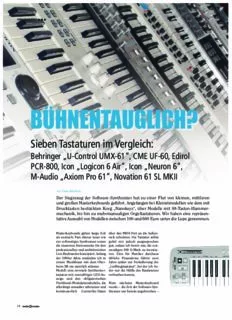
bühnentauglich?

React and React Native: Build cross-platform JavaScript applications with native power for the web, desktop, and mobile

Goniothalamus elegans Ast (Annonaceae), a New Record for Thailand
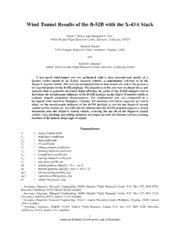
NASA Technical Reports Server (NTRS) 20060022150: Wind Tunnel Results of the B-52B with the X-43A Stack
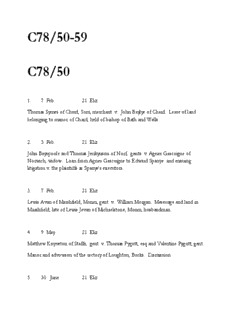
C78/50-59 C78/50 - AALT
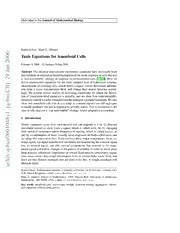
Taxis Equations for Amoeboid Cells
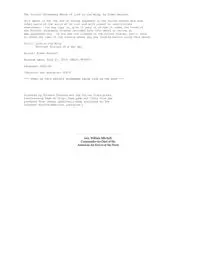
Luck on the Wing by Elmer Haslett
![SL(n,Z[t]) is not FP_{n-1} book image](https://cdn.pdfdrive.to/media/content/thumbnails/d5139d6f-df0f-47ff-a92e-7a36e43ce044.webp)
SL(n,Z[t]) is not FP_{n-1}
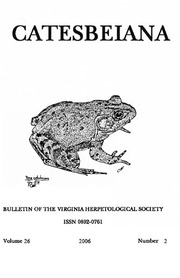
Catesbeiana : bulletin of the Virginia Herpetological Society
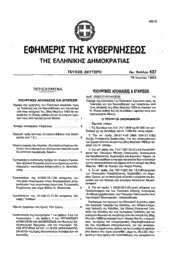
Greek Government Gazette: Part 2, 1993 no. 437
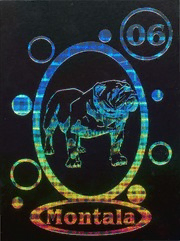
Montala

Monetha-whitepaper
